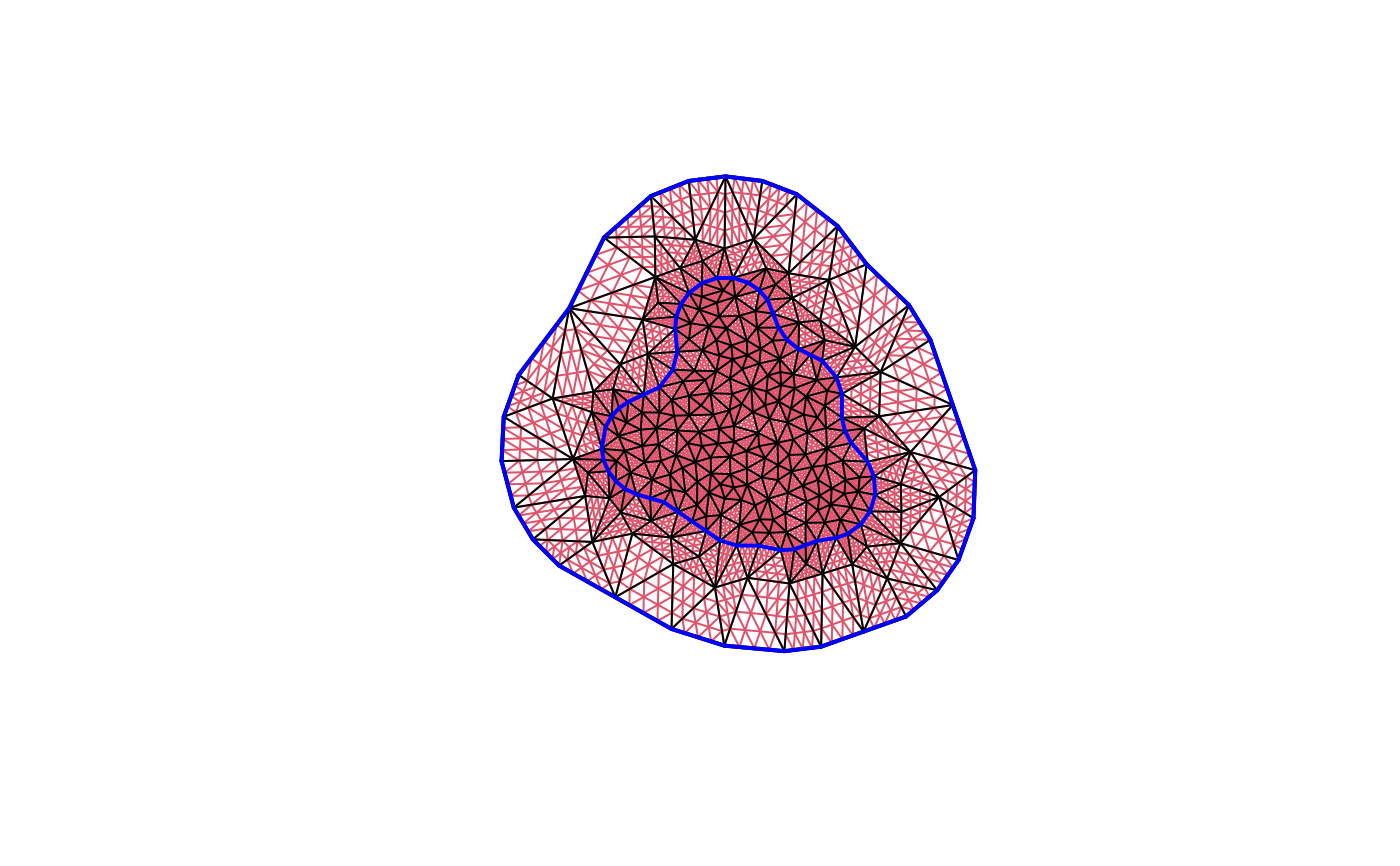Splits each mesh triangle into
(n + 1)^2 subtriangles.
The current version drops any edge constraint information from the mesh.
Arguments
- mesh
an fm_mesh_2d object
- n
number of added points along each edge. Default is 1.
- delaunay
logical; if
TRUE, the subdivided mesh is forced into a Delaunay triangle structure. IfFALSE(default), the triangles are subdivided uniformly instead.
Value
A refined fm_mesh_2d object, with added bary information
(an fm_bary() object), that can be used for interpolating functions from
the original mesh to the new mesh (from version 0.5.0.9002).
Author
Finn Lindgren Finn.Lindgren@gmail.com
Examples
mesh <- fm_rcdt_2d_inla(
loc = rbind(c(0, 0), c(1, 0), c(0, 1)),
tv = rbind(c(1, 2, 3))
)
mesh_sub <- fm_subdivide(mesh, 3)
mesh
#> fm_mesh_2d object:
#> Manifold: R2
#> V / E / T: 3 / 3 / 1
#> Euler char.: 1
#> Constraints: Boundary: 3 boundary edges (1 group: 0), Interior: 0 edges
#> Bounding box: (0,1) x (0,1)
#> Basis d.o.f.: 3
mesh_sub
#> fm_mesh_2d object:
#> Manifold: R2
#> V / E / T: 15 / 30 / 16
#> Euler char.: 1
#> Constraints: Boundary: 12 boundary edges (1 group: 0), Interior: 0 edges
#> Bounding box: (0,1) x (0,1)
#> Basis d.o.f.: 15
# Difference should be zero for flat triangle meshes:
sum((mesh_sub$loc - fm_basis(mesh, mesh_sub$bary) %*% mesh$loc)^2)
#> [1] 0
plot(mesh_sub, edge.color = 2)
 plot(fm_subdivide(fmexample$mesh, 3), edge.color = 2)
plot(fmexample$mesh, add = TRUE, edge.color = 1)
plot(fm_subdivide(fmexample$mesh, 3), edge.color = 2)
plot(fmexample$mesh, add = TRUE, edge.color = 1)
